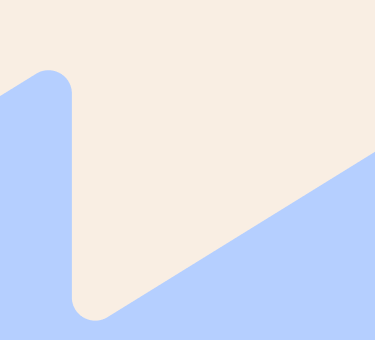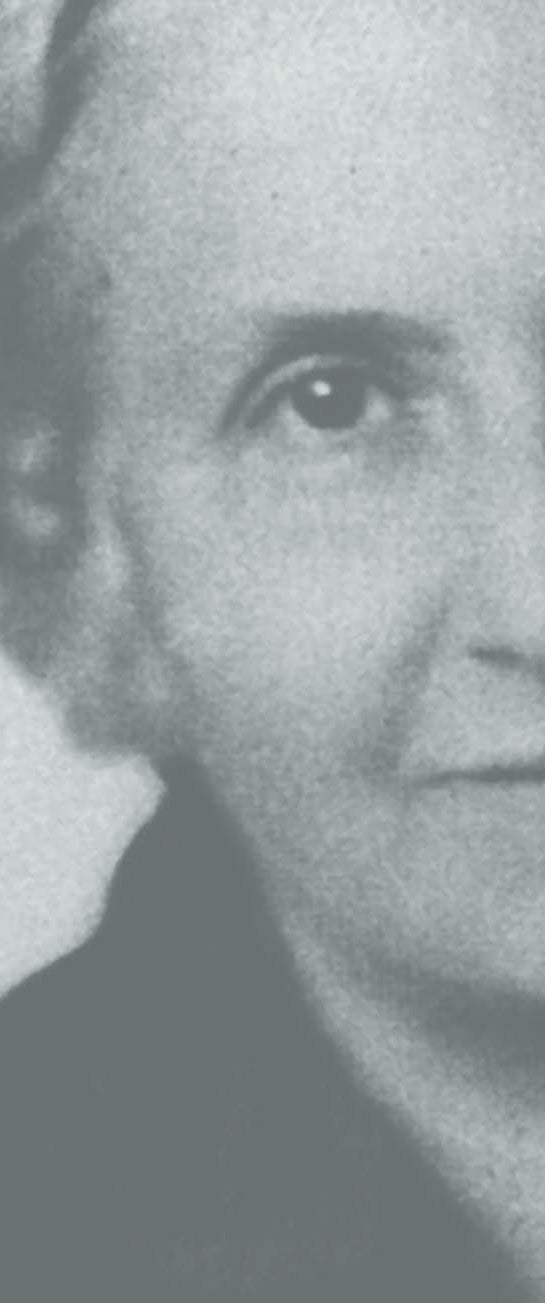
Maria Montessori was born on 08/31/1870 in Chiaravalle, Italy, the only daughter of Catholic civil servants Alessandro and Renilde Montessori and scientists.
Maria received a lot of support from her mother in her life choices. She developed an early interest in mathematics. She moved to Rome at the age of 12, partly to provide her with a better education. When she was 15, she wanted to enroll in an engineering school. However, the all-boys school opened its doors to her. She stayed for 1 or 2 years, but then decided to stop and return to the normal curriculum.
Around 18, she decided to go into medicine, but once again it was reserved for men. A disagreement arose with her father, who wanted her to be a teacher. The Ministry of Education refused to let her enter the University of Medicine, but through perseverance she finally obtained authorization. Maria Montessori became one of Italy's first female doctors, graduating in 1896. Her university years were difficult, as her fellow students refused to accept her. Her rebellious nature pushed her to take up the challenge. In the course of her studies, she turned to psychiatry, and wrote her thesis in this field. Between 1894 and 1896, she met mentally ill children, noting in particular that they were mixed with adults day and night.
His first action at the psychiatric clinic in Rome was to separate adults and children through a request to the director of the establishment. This led to the creation of a special department dedicated to children.
His second action, after observing that the children were doing nothing at all, was to observe that the children were parked. They were throwing themselves on the crumbs after every meal. So, she says, they can't be left idle,they need to be occupied.
1898 First pedagogical conference in Turin: Maria Montessori gives an account of her 2-year work as an assistant in the psychiatric clinic.
- "Disabled children are not outlaws, they have rights, and are entitled to all the benefits that an education brings".
- "We must enable these unfortunate people to reintegrate into society, to find a place for themselves, a little independence in a civilized world and the dignity of human beings.
At the end of this congress, the French Minister of Education entrusted him with the management of a speech therapy school for children with sensory impairments. These were not insane children, but children with motor and/or physical deficiencies. She ran the school from 1898 to 1902.
In 1898, Maria Montessori had a degree in biology, psychology and philosophy. She was also a doctor and psychiatrist. She was therefore a researcher in the human sciences, but she had never been a teacher or pedagogue, and found herself with a school to run. So she decided to come to France to learn pedagogy. She drew inspiration from the work of 2 medical educators: Jean-Gaspard Itard (1775-1835) and Edouard Seguin (a pupil of the former, 1812-1880).
Both worked in an institute for the deaf and dumb. Seguin had devised sensory teaching aids for them.
Maria Montessori copied and calligraphed Edouard Seguin's book, translated Itard's work, and imbued herself with Seguin's thinking: slowness and silence, so that thought can unfold.
Maria Montessori commissioned the manufacture of teaching and sensory materials. She taught the teachers at her school how to use the materials. The children soon learned to read, write and count. She decided to register the children (many of them girls) for the national primary exams. Many of the children passed with flying colors.
This brought Maria Montessori a great deal of praise. However, she saw a real problem: if deficient children do better than so-called normal children, there must be something wrong with the way they are taught!
She begins to believe that it should be possible to develop the potential of every child. Her interest shifted from abnormality to normality, from education to the development of human potential.
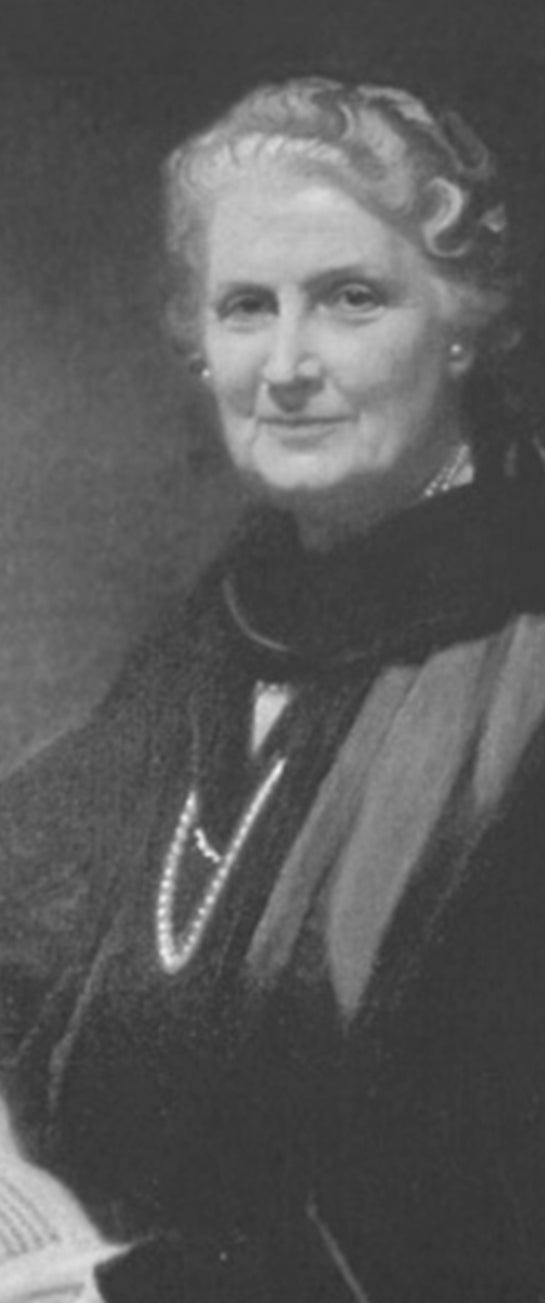
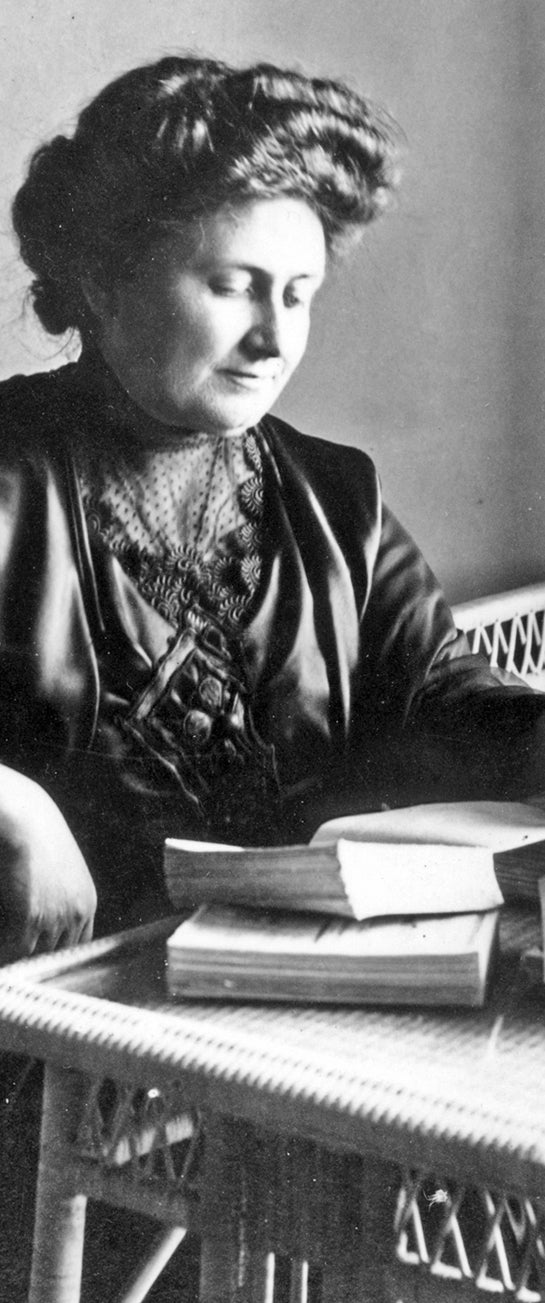
In 1904, she became a professor of anthropology in Rome, and wrote a second thesis, "L'anthropologie pédagogique", which was published in 1910. She continued her training.
1907: (until 1910) The mayor of Rome wants to rehabilitate San Lorenzo, and Maria MONTESSORI is asked to take charge of pre-school children (under 6-7). January 06: opening of the first children's home(Casa dei bambini). It's called a house because it's located on the first floor of buildings.
- First revolution: She decided to have furniture built to children's height. For Maria Montessori , children's feet should touch the ground so that they feel secure. For Maria Montessori, the child's discovery would take place in this house, thanks to the furniture.
She's going to bring the toys and equipment used at the speech therapy school into this house. She asked the teachers to set up small tables with brushes and combs at the entrance, so that the children could enter with dignity, clean and groomed. It was while she was observing a child in front of this little activity table that she discovered the phenomenon of attention in children, a phenomenon that enables them to concentrate on a goal. It's this concentration that leads to the development of intelligence.
The child's secret: When children concentrate on their activities, they become calm, socialized (socializable?). It's the development of intelligence, a transformation in the child. The conclusion is: it's through individual work that we socialize children.
The aim is to find ways of enabling children to concentrate on their activities.
After this discovery, Maria Montessori had Seguin's materials remanufactured to adapt their shapes. She had prototypes made, keeping only those that encouraged the child's attention and rejecting the others.
- Second revolution: A 4-year-old who watched the older children manipulate the dedicated equipment learned to write.
Children learn on their own through observation and absorption (respecting sensitive periods). That's why we introduce children to rough letters at age 3.
Children's free choice: when children know what's good for them, it builds them up. One day, when the teacher arrived late, she saw the children settled in, having helped themselves to the materials they needed. Maria Montessori had shelves built for them.
As soon as a child does something, even if you don't understand it, don't disturb them, but observe them. Don't react if you want to understand or even just think.
1909: Maria Montessori gives her first national course and trains her first teachers (writing her book "Scientific Pedagogy"). She began to teach. In this class, she "found" 2 assistants: Anna Maccheroni (music program) and Adèle Costa Gnocci (0/3 years program).
1913: She gives her first international course in Rome (to several hundred students from all over the world). From then on, she continued to pass on her knowledge, even though she was working on the elementary school curriculum and equipment. Invited by Graham Bell to visit the USA, she gave her first lecture in 1915.
1916: She went to Spain, where she founded a seminary and wrote books on religion.
1924: Creation of the Montessori Opera, the first association, which still exists today.
1929: AMI founded in Copenhagen, with headquarters in AMSTERDAM, where it has lived since Mussolini came to power in Italy.
1939-1946: INDIA: She was placed under house arrest in this country because of her Italian origin, and India was a Commonwealth country at war with Italy. She took advantage of the situation to give lectures to hundreds of students, including mothers who had brought their babies. This gave her the opportunity to observe and develop an interest in children under 3. She then asked one of her assistants to develop a program for children aged 0-3. Together with her son, she also developed the "cosmic" program:
At the children's home: NORMALIZATION " Help me to do it myself ",
Elementary school: COSMIC EDUCATION " Help me to think for myself ".
During these 6 years, the children will hear and hear again 5 great stories. These great stories, repeated every year for six years, will lead to various research projects.
- Birth of the universe and development (origins)
- How the solar system was formed (including the Earth)
- How life appeared on earth
- Man's appearance on earth
- History of language and history of mathematics
This gives rise to work in all subjects, so the obsession is no longer just with learning to read or write. Children are the focus of the program. It's based on children's basic needs and tastes.
Children are given an idea of who they are and where they are. They understand that they're not the first, which brings with it notions of modesty, but also of ecology, interdependence and respect for others, the earth, flora and fauna. It also conveys an idea of each person's function on earth: everyone has a function on earth.
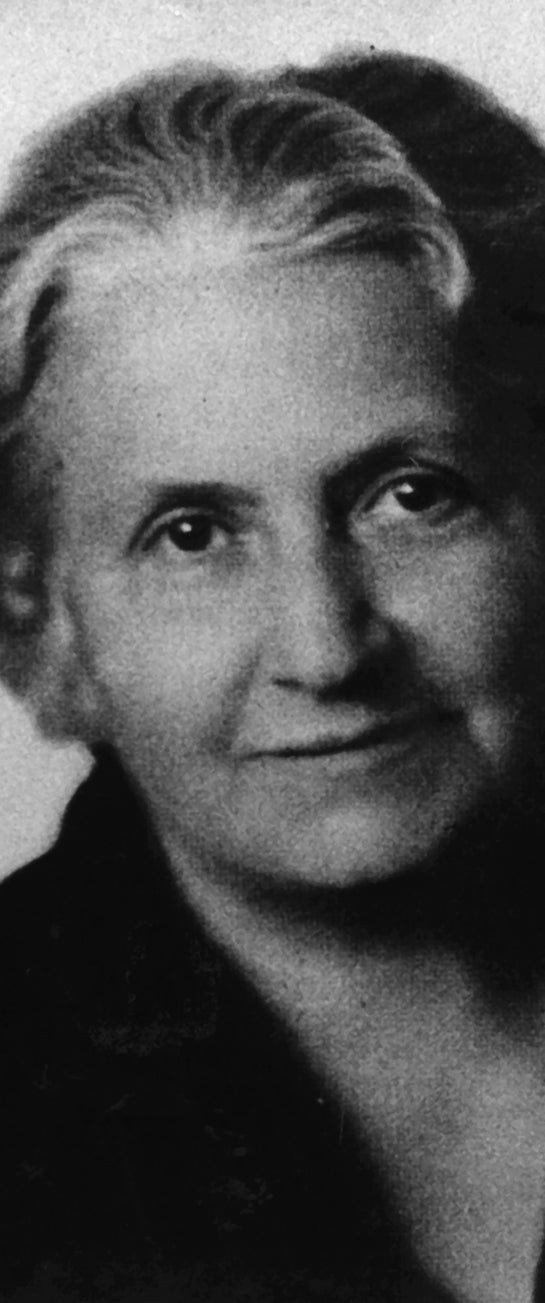
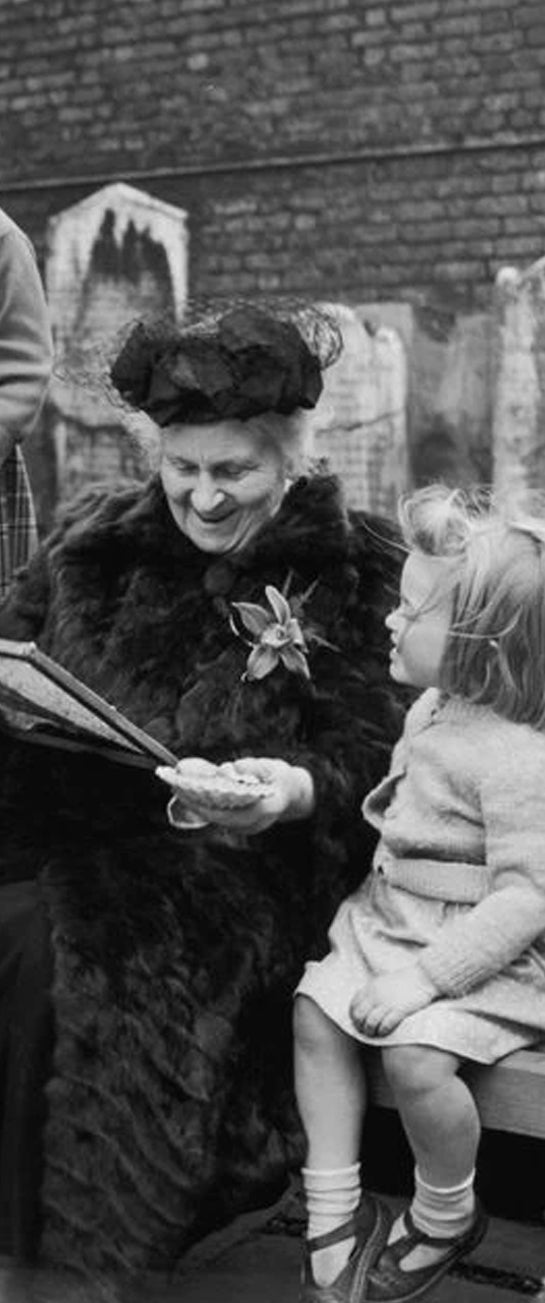
During this period, then, in the life of Maria Montessori there will be :
- a training section
- a theory and pedagogy creation section
- a transmission section
After 1946: She continues to give courses and lectures (the only one in her lifetime). She gave many international conferences and congresses.
In 1952, she returned to Europe, first to Italy, where she was rehabilitated, but preferred to settle in the Netherlands. She died in Noordwijk aan Zee (Netherlands) in 1952 at the age of 81. Maria Montessori's son Mario continued her work until 1982, when he died at the age of 83.
In France, the first international course was held in 1947. Madame Georgette Bernard was in charge of training in France at the time, and was replaced by her daughter Madame GILLET, and then by the current ISMM Director, Madame Patricia SPINELLI.
Today there are over 22,000 Montessori schools on 6 continents...
Find out more about Maria Montessori's pedagogy
